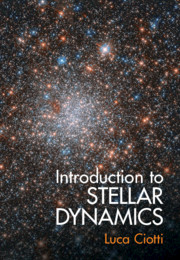Book contents
- Frontmatter
- Contents
- Preface
- Part I Potential Theory
- Part II Systems of Particles
- Part III Collisionless Systems
- 9 The Collisionless Boltzmann Equation and the Jeans Theorem
- 10 The Jeans Equations and the Tensor Virial Theorem
- 11 Projected Dynamics
- 12 Modeling Techniques 1: Phase-Space Approach
- 13 Modeling Techniques 2: Moments Approach
- 14 Modeling Techniques 3: From ρ to f
- Appendix Mathematical Background
- References
- Index
12 - Modeling Techniques 1: Phase-Space Approach
from Part III - Collisionless Systems
Published online by Cambridge University Press: 28 May 2021
- Frontmatter
- Contents
- Preface
- Part I Potential Theory
- Part II Systems of Particles
- Part III Collisionless Systems
- 9 The Collisionless Boltzmann Equation and the Jeans Theorem
- 10 The Jeans Equations and the Tensor Virial Theorem
- 11 Projected Dynamics
- 12 Modeling Techniques 1: Phase-Space Approach
- 13 Modeling Techniques 2: Moments Approach
- 14 Modeling Techniques 3: From ρ to f
- Appendix Mathematical Background
- References
- Index
Summary
Armed with the power of the Jeans theorem, we now proceed to formulate and discuss the so-called direct problem of collisionless stationary stellar dynamics. This approach is best suited for systems where empirical/dynamical arguments can lead to a plausible ansatz for the form of the underlying distribution function, expressed in terms of the relevant integrals of motion. In the absence of such an ansatz and in the presence of specific requirements (in general motivated by observations) for the density and velocity dispersion profiles, a different and complementary approach based on the use of the Jeans equations is often followed, which is the subject of Chapter 13.
Keywords
- Type
- Chapter
- Information
- Introduction to Stellar Dynamics , pp. 211 - 235Publisher: Cambridge University PressPrint publication year: 2021

